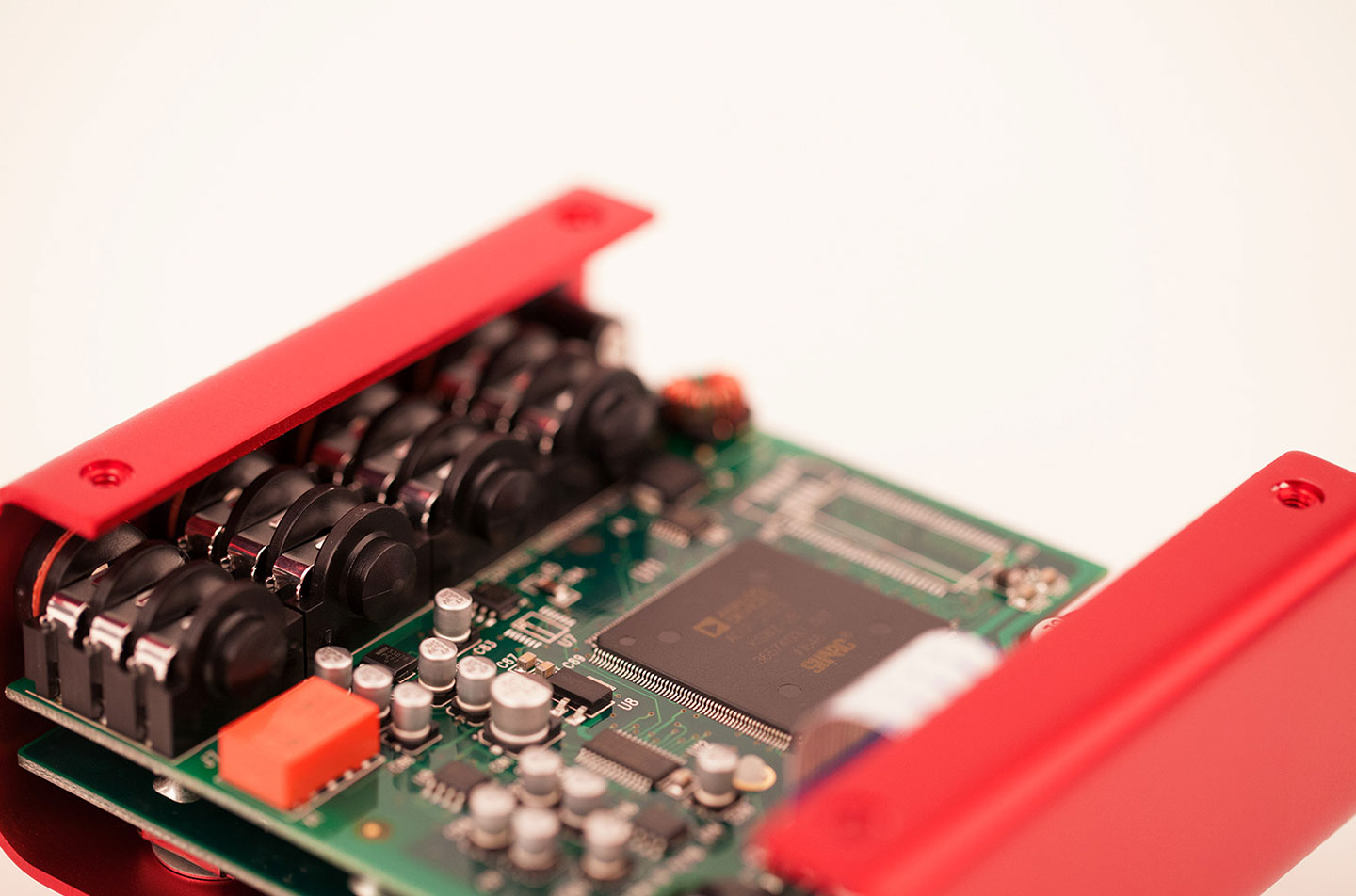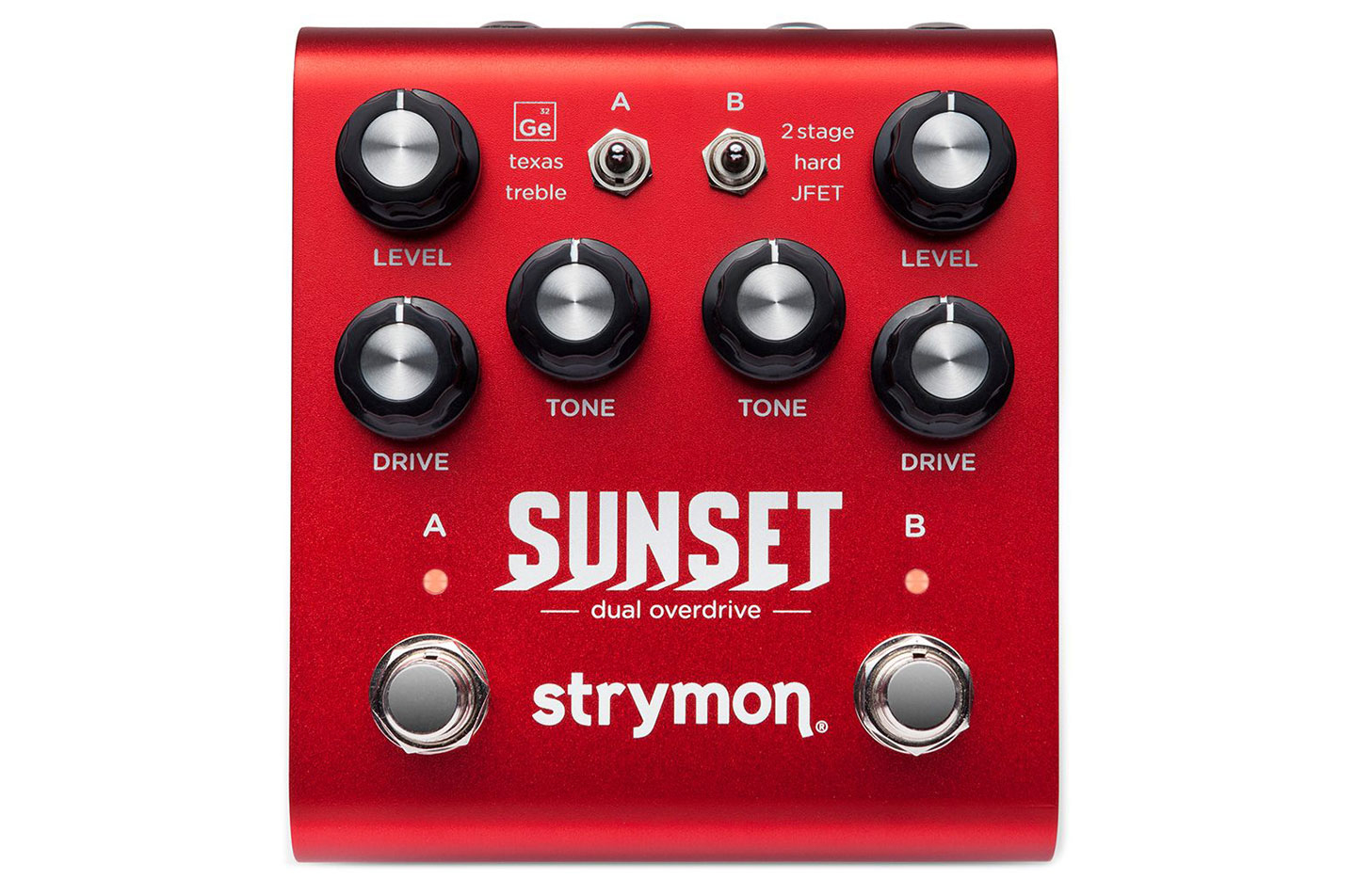- It's hard to believe it's been six years since I reviewed the TimeLine, a powerful stereo delay pedal made by Strymon. At that point the company was a relative newcomer to the effect pedal scene but they quickly built a reputation for making innovative products that catered to more than just guitarists. This was in part due to the features they built into some of their pedals: stereo audio processing, MIDI control and the ability to handle line level signals without re-amping hardware. Having been quite impressed with what the TimeLine could do, I emailed the company asking if they had ever considered making a distortion/overdrive unit in the same vein. Their response was tight-lipped.
Then last year Strymon released the Riverside, a multistage drive pedal. With mono processing and no MIDI control, my initial reaction was to dismiss it and move on, hoping that they would release a more capable big brother version like they did with the blueSky and BigSky reverb units. However, in March Strymon announced the Sunset, a dual overdrive pedal with the same guitar-oriented form factor. Despite coming with the same limitations, I wanted to try one out to find out how it would fare in an electronic musician's rig.
Like all of Strymon's other pedals, the core of the Sunset's signal processing is digital. The engine is a powerful SHARC DSP chip which, according to the Sunset's manual, provides an impressive-sounding 1585 megaflops to process 24-bit 96kHz audio. There is a discrete analogue side to this pedal, however, in the form of a class-A JFET circuit that gives a wide range of headroom (up to 20dB of analogue gain) before being processed by the DSP. This means there is plenty of range for passing line level devices like synths and drum machines directly into Sunset without having to worry about overloading the unit. Bypass within the Sunset is also analogue and can either work in True Bypass mode (which uses electromechanical relay switching) or transparent Analogue Buffered Bypass mode, the latter being designed for use in pedal chains and long cable runs.
The reason Strymon call Sunset a "dual overdrive" pedal is that it contains two separate, reconfigurable overdrive engines. On the front panel these channels are labeled A and B, with controls for each split down the middle of the pedal. For each of these channels you'll find a multi-position rocker switch that lets you pick from three unique circuit types, surrounded by knobs that control the Level, Drive and Tone of the selected circuit. While the Level knob is pretty straightforward, the Drive and Tone knobs map to a bespoke set of parameters based on the circuit type chosen. Below the knobs sit footswitches common to all Strymon pedals, used here to either bypass or engage the two circuit channels. Footswitch A also lets you save the current settings to the "Favorite" preset, another common feature for the Strymon line that allows you to quickly switch between the current settings and a saved preset via an external latching footswitch.
On the back of the unit you'll find four jacks. There's one each for audio in/out and a pair for control, namely the aforementioned favourite switch port and another for connecting an expression pedal. The Sunset's expression pedal implementation is more sophisticated than just volume control. It lets you memorise the settings of all knobs (basically storing a preset) and morph between two sounds. Above the Sunset's jacks are a pair of recessed three-position switches. The first of these is labeled Bright and it boosts or attenuates the high frequencies in order to match an amp. The second is much more useful as it allows you to configure the relationship of the two channels, either routing A to B (or vice versa) or having them run in parallel.
The real question is, of course, how does it sound? As expected, the Sunset responded very well to the line level sources I ran through it. It has a very organic and lively response to signals with a wide range of dynamics. It easily gets aggressive without sucking away the bottom end like many other distortion/overdrive pedals have a tendency to do. Of the six circuit types, the Germanium, Texas and JFET types were my favourites due to their ability to add warmth to a signal at lower drive levels and then work into heavier saturation. As indicated by the name, Treble is best on leads as it tends to tip the scales towards high frequencies. Finally, while they were were a bit much to use on drums, the 2-stage and Hard circuits hit a nice wall-of-noise zone when used on synths.
If Strymon ever does decide to give Sunset the BigSky treatment and create a stereo-capable version with MIDI control, it will be an absolute monster. However, even with the limitations that the Sunset carries, the results easily justify the price of admission. It works great on a mono aux send to add a bit of oomph in the effects returns and is a no-brainer for mono analogue synths.
Ratings:
Cost: 3.7
Versatility: 4.0
Ease of use: 4.0
Sound: 4.8
 On the back of the unit you'll find four jacks. There's one each for audio in/out and a pair for control, namely the aforementioned favourite switch port and another for connecting an expression pedal. The Sunset's expression pedal implementation is more sophisticated than just volume control. It lets you memorise the settings of all knobs (basically storing a preset) and morph between two sounds. Above the Sunset's jacks are a pair of recessed three-position switches. The first of these is labeled Bright and it boosts or attenuates the high frequencies in order to match an amp. The second is much more useful as it allows you to configure the relationship of the two channels, either routing A to B (or vice versa) or having them run in parallel. The real question is, of course, how does it sound? As expected, the Sunset responded very well to the line level sources I ran through it. It has a very organic and lively response to signals with a wide range of dynamics. It easily gets aggressive without sucking away the bottom end like many other distortion/overdrive pedals have a tendency to do. Of the six circuit types, the Germanium, Texas and JFET types were my favourites due to their ability to add warmth to a signal at lower drive levels and then work into heavier saturation. As indicated by the name, Treble is best on leads as it tends to tip the scales towards high frequencies. Finally, while they were were a bit much to use on drums, the 2-stage and Hard circuits hit a nice wall-of-noise zone when used on synths. If Strymon ever does decide to give Sunset the BigSky treatment and create a stereo-capable version with MIDI control, it will be an absolute monster. However, even with the limitations that the Sunset carries, the results easily justify the price of admission. It works great on a mono aux send to add a bit of oomph in the effects returns and is a no-brainer for mono analogue synths. Ratings: Cost: 3.7 Versatility: 4.0 Ease of use: 4.0 Sound: 4.8
On the back of the unit you'll find four jacks. There's one each for audio in/out and a pair for control, namely the aforementioned favourite switch port and another for connecting an expression pedal. The Sunset's expression pedal implementation is more sophisticated than just volume control. It lets you memorise the settings of all knobs (basically storing a preset) and morph between two sounds. Above the Sunset's jacks are a pair of recessed three-position switches. The first of these is labeled Bright and it boosts or attenuates the high frequencies in order to match an amp. The second is much more useful as it allows you to configure the relationship of the two channels, either routing A to B (or vice versa) or having them run in parallel. The real question is, of course, how does it sound? As expected, the Sunset responded very well to the line level sources I ran through it. It has a very organic and lively response to signals with a wide range of dynamics. It easily gets aggressive without sucking away the bottom end like many other distortion/overdrive pedals have a tendency to do. Of the six circuit types, the Germanium, Texas and JFET types were my favourites due to their ability to add warmth to a signal at lower drive levels and then work into heavier saturation. As indicated by the name, Treble is best on leads as it tends to tip the scales towards high frequencies. Finally, while they were were a bit much to use on drums, the 2-stage and Hard circuits hit a nice wall-of-noise zone when used on synths. If Strymon ever does decide to give Sunset the BigSky treatment and create a stereo-capable version with MIDI control, it will be an absolute monster. However, even with the limitations that the Sunset carries, the results easily justify the price of admission. It works great on a mono aux send to add a bit of oomph in the effects returns and is a no-brainer for mono analogue synths. Ratings: Cost: 3.7 Versatility: 4.0 Ease of use: 4.0 Sound: 4.8